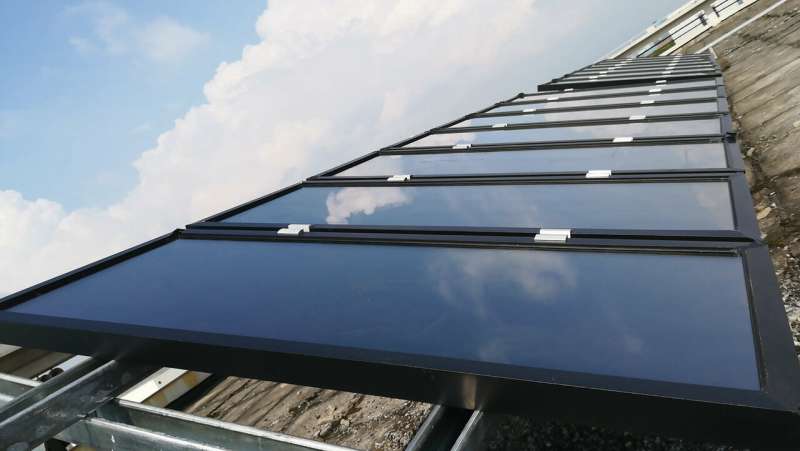The potential of non-toxic materials to replace lead in perovskite solar cells

Developing efficient solar cells without lead as a major component remains a "formidable scientific challenge," according to a review in the journal Science and Technology of Advanced Materials.
Solar cells made from perovskites, a collection of compounds with a particular crystal structure, have been developing rapidly as a cheaper alternative to silicon solar cells. However, perovskite-based solar cells (PSCs) are still far from industrial application as a clean renewable energy source. A major drawback is they usually contain lead as the primary material absorbing sunlight for conversion into electricity.
Lead pollution can result in long-term environmental damage due to its high toxicity and long degradation time. Lead also poses a serious threat to human health, being harmful to the nervous and reproductive systems. Silicon solar panels can contain trace amounts of lead in the glass that encases the cells' active components, but it is insoluble. In contrast, perovskite compounds readily dissolve in water, meaning rain or humidity could release lead into the environment. The risk is greatest during the manufacture and disposal of solar cells. Also, if solar panels are damaged while they are still in use, say on a home or school roof, rain could wash lead off the building and into the surrounding yard or playground.
Recently, researchers have investigated replacing lead in PSCs with other elements, including tin, germanium, bismuth, antimony, copper and manganese. Hong Lin, an applied chemist at Tsinghua University in China, and colleagues reviewed the progress on lead-free PSCs to ask a key question: Is it possible to fully replace lead in PSCs with less toxic elements without compromising efficiency and stability?
Lead-based PSCs have reached a 22.7 percent efficiency rate for converting sunlight to electricity in lab tests, bringing them close to the 25 percent efficiency of research-grade silicon solar cells. Commercial silicon solar cells usually range between 15 percent and 22 percent.
At present, the best lead-free PSCs have approximately 6 percent efficiency, which is too low for industrial applications; but efficiency can be as high as 17 percent when lead is partially replaced. Tin-based PSCs show the most promising power conversion efficiency. Tin has many properties that make it suitable as a lead replacement. For example, it possesses a similar outer electron shell structure to lead but has a smaller ionic radius, meaning that it can form similar bonds without disturbing the crystal lattice structure. Various tin-based PSCs have been tested, combining tin with elements such as caesium to form molecules with unique properties.
Much work remains to increase PSC efficiency and stability, and to improve methods of mass production. But, given that the field is young and progress has been rapid, Lin and her colleagues are optimistic that "lead can, and must, be completely replaced by non-toxic elements."
More information: Qi Zhang et al. Perovskite solar cells: must lead be replaced – and can it be done?, Science and Technology of Advanced Materials (2018). DOI: 10.1080/14686996.2018.1460176
Journal information: Science and Technology of Advanced Materials
Provided by Tsinghua University




















